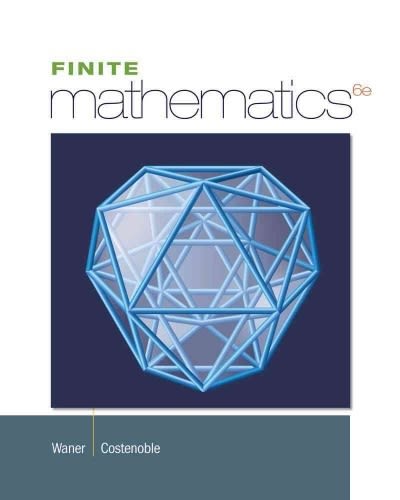Question
One planet has 5^10 inhabitants, each identified by a 10-character tag. Each character of the tags is either A, B, C, D or E (in
One planet has 5^10 inhabitants, each identified by a 10-character tag. Each character of the tags is either A, B, C, D or E (in which case there are a total of 5^10 different tags) and each resident has a different identifier (in which case all identifiers are therefore currently in use). Two examples of tags: CEAADEEBBB, AABABCAADE.
(a) How many residents are identified as a palindrome? (ie the same when read forwards and backwards, e.g. AABCAACBAA)
(b) In the identifier of how many residents are no two consecutive characters the same? (e.g. ABADABACAD is like this, while AACBDBABCB is not)
Let's choose a random inhabitant of the planet (so the chosen inhabitant is equally likely any of the inhabitants of the planet). In what probability,
(c) his identifier is a palindrome?
(d) no two consecutive characters in his identifier are the same?
Step by Step Solution
There are 3 Steps involved in it
Step: 1

Get Instant Access to Expert-Tailored Solutions
See step-by-step solutions with expert insights and AI powered tools for academic success
Step: 2

Step: 3

Ace Your Homework with AI
Get the answers you need in no time with our AI-driven, step-by-step assistance
Get Started


